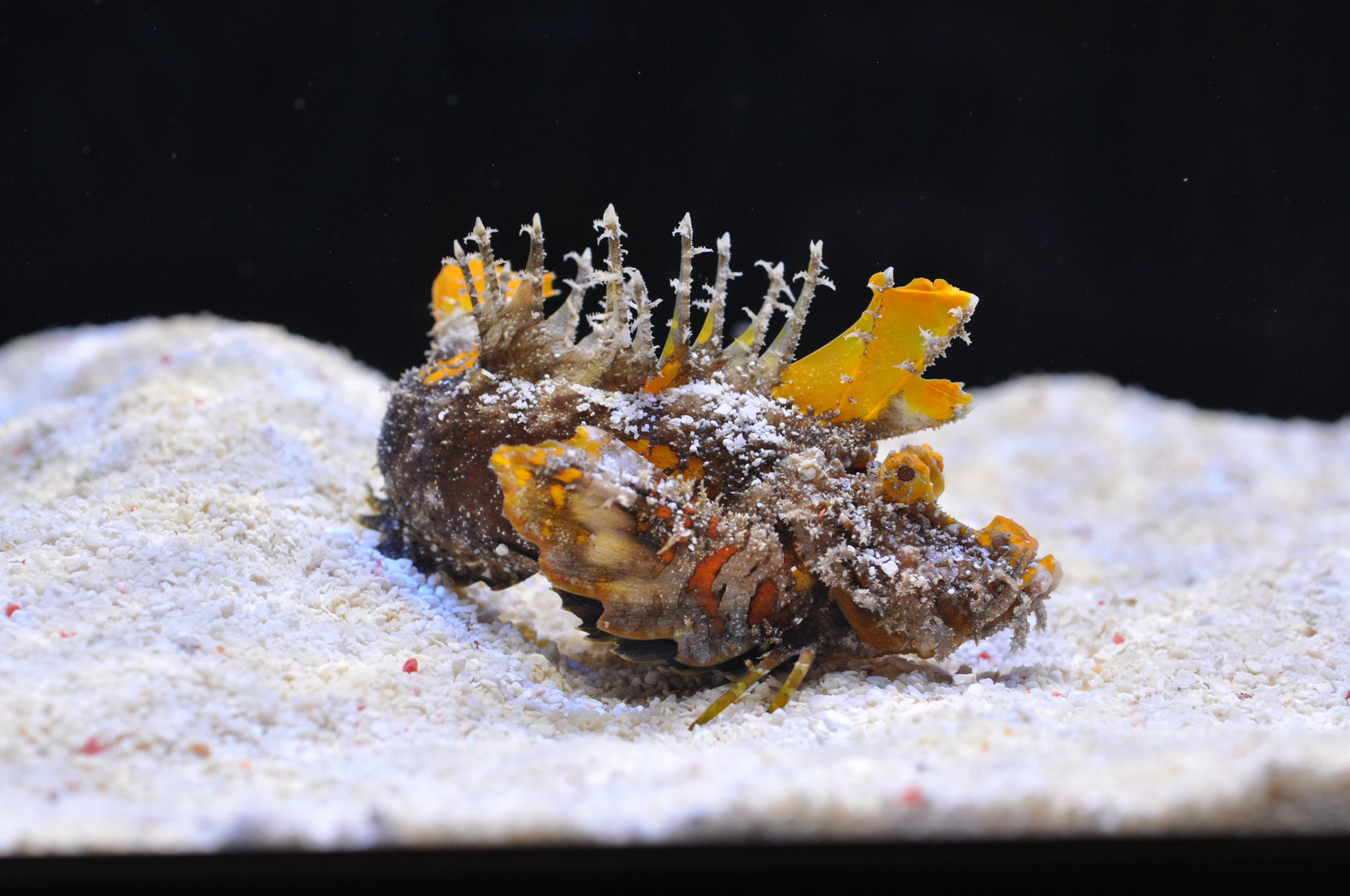Fishes That Walk

Fishes That Walk
Within their weightless aquatic world, fishes have evolved to locomote in a wide variety of non-swimming ways. Eels slither along the bottom in a serpentine crawl; blennies and mudskippers hop along the shoreline; remoras suction themselves to larger natatory hosts. For a select few, walking, rather than swimming, has become the main mode of transportation. In some instances, this has necessitated a drastic alteration to the morphology of the fins, creating some truly unusual creatures. So lets take a look at some of the most remarkable examples found in the marine aquarium.

Sea Goblins (Inimicus)
As the name alone should indicate, Sea Goblins are bizarre creatures born from some Boschian nightmare. Ten species are recognized, spread across the tropical and subtropical shallows of the Indo-Pacific. The genus belongs to the stonefish family Synanceiidae, a group home to the worlds most venomous fish, the Synanceia stonefishes. Inimicus is itself highly venomous, but, while the sting of its dorsal fin spines is likely to be memorable for those unlucky enough to experience it, the toxins involved are not known to be lethal. Synanceia are true reef fishes, found camouflaged against coral substrates. Sea Goblins, on the other hand, occur in sandy or silty environssometimes near to reefs, oftentimes notand their camouflage is meant to mimic an accumulation of algae and detritus moreso than a stone. Its in the pectoral fins that the two groups can most easily be told apart, as Inimicus has the first two rays unattached to a connecting membrane, allowing them to be extended in a fingerlike fashion. These are used to methodically probe into the sediments in search of their prey. Note that in captivity, live foods are typically required to initiate a response from these finicky feeders.

Scorpionfishes (Rhinopias)
Rhinopias are the best example of a walking scorpionfish, though its perhaps a bit more accurate to describe their movement as stumbling. While these fishes are undeniably beautiful with their lacey patterning and elaborate decorations, they are rather lacking in grace as they plod along. A handful of species exist, and these can come in a wide range of colors, from drab and inconspicuous browns to vibrant shades of red and purple. In an aquarium, Rhinopias are gentle creatures that can be challenging to feed initially. Live foods are almost always needed, but most can eventually be trained to accept frozen fish.

Frogfish (Antennarius)
Frogfishes are at first glance remarkably similar to a fish like Rhinopias. Both are slow-moving and bulky in shape, and both move about by walking along on their pectoral fins. But stark differences exist in the shape of their fins. The scorpionfishes have a very traditional looking morphology, with a series of rays connected by a membrane, while in the frogfishes we find a thickened lobe, limblike in its appearance, which bears somewhat inconspicuous rays near its tip. When seen in motion, the effect is uncannily like a true walking fish. Another important difference is seen in the modifications of the dorsal fin into a lure, tantalizingly dangled near to their capacious moth. Frogfish are a variety of anglerfish, a group classified in a distinct order, the Lophiiformes.

Tongue Sole (Cynoglossus)
For a totally different way of walking along the bottom, consider the humble Tongue Soles of the family Cynoglossidae. These peculiar flatfishes possess elongated dorsal and anal fins that stretch the perimeter of their body. Their movement is not unlike that of a millipede and its many legs, which pulse rhythmically in waves to create forward propulsion. In this way, cynoglossids hug the bottom, creeping about slowly very slowly. An especially interesting example in this family is Symphurus thermophilus, which occur in huge numbers in one very specific habitat: deepwater hydrothermal vents, often rich in sulfur and with temperatures upwards of 180.